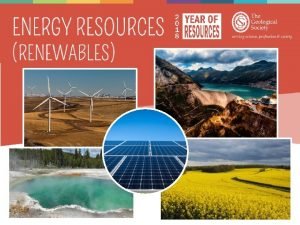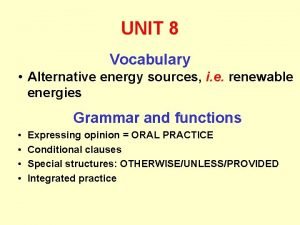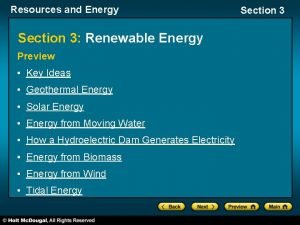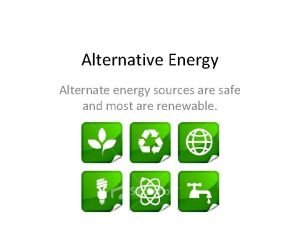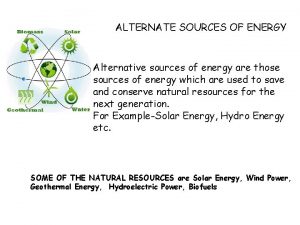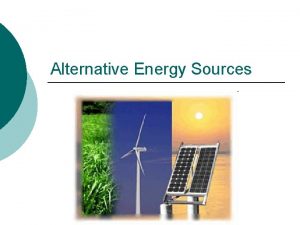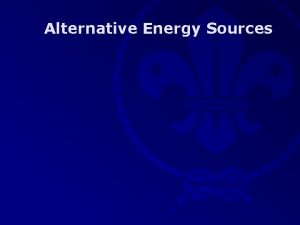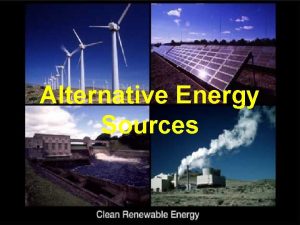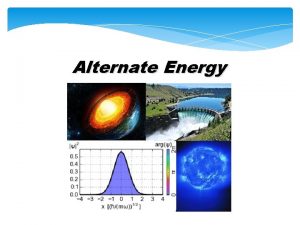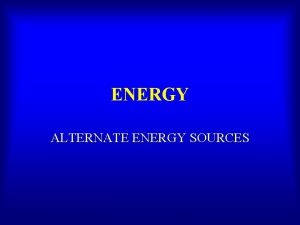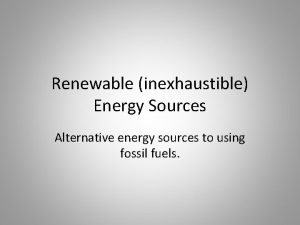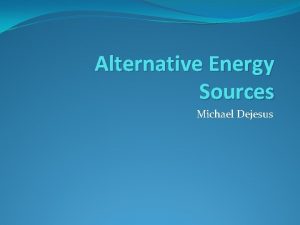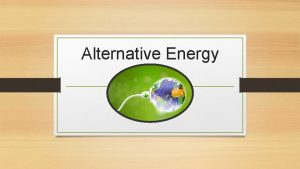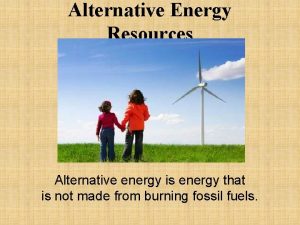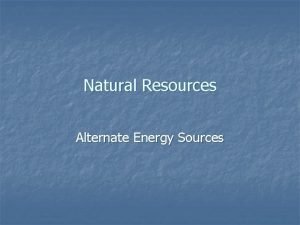Alternative Energy Alternate energy sources are safe and
















- Slides: 16

Alternative Energy Alternate energy sources are safe and most are renewable.

7 types of Alternative Energy: • • Solar Nuclear Wind Hydroelectric Geothermal Tidal Biomass

Solar energy harnesses the power of the sun. • Advantages: free, unlimited supply, non-polluting. • Disadvantages: Equipment can be expensive, supplemental heating unit needed when sun is not out (backup). • Practical for NC?

Solar Energy 1. Active Solar – Collect Solar Heat 2. Passive Solar – Southern Facing Windows 3. Photovoltaic Cells – Cells convert light into electricity 4. Mirrors – Focus light onto water tanks to create steam


Nuclear Energy • Creation of Energy from Fission – What is fission? (Fusion? ) • Advantages: produces a lot of energy from little material • Disadvantages: Dangerous waste, potential meltdown. • Practical for NC?

Shearon Harris

Wind Energy • Generating electricity by using wind to turn turbines. – Current US: 4. 35% of all electricity • Advantages: Cheap, safe • Disadvantages: Unpredictable. Disrupts TV and radio reception • Practical for NC?

Hydroelectric Power • Power generated by falling water and turbines. Water is stored behind a dam which channels it through turbines to generate electricity. • Advantages: free, safe, renewable. • Disadvantages: sediment buildup behind dams, droughts, lack of suitable locations (most built in mountainous areas). • Practical for NC? To See Hydroelectric Dam Animation click Here!

Hoover Dam

Geothermal Energy • Harnesses by tapping natural underground reservoirs of steam and hot water. The hot water is used directly for heating and to turn turbines to generate electricity. • Advantages: safe, clean • Disadvantages: limited locations, can deplete groundwater • Practical for NC?


Tidal Power • Harnesses the energy of the ocean by constructing a dam across the mouth of the bay or estuary. The strong in and out flow that results drives turbines and electric generators. • Advantages: safe, inexpensive and renewable • Disadvantages: locations ideal in coastal areas with a tidal range more than 8 m. • Practical for NC?


Biomass • Obtaining energy by burning fuels from living or recently living organisms. • Advantages: takes carbon out of the atmosphere as it is growing and returns it as it burns—no net increase in CO 2 • Disadvantages: inefficient, increases methane, needs more land • Practical for NC?

Alternative Energy
 Insidan region jh
Insidan region jh Define renewable energy source
Define renewable energy source Use of alternative energy sources ppt
Use of alternative energy sources ppt Print and web sources
Print and web sources Sources of water sources of water
Sources of water sources of water Safe feed safe food
Safe feed safe food Safe people safe places
Safe people safe places Pv&e
Pv&e Alternative energy vocabulary
Alternative energy vocabulary Energy energy transfer and general energy analysis
Energy energy transfer and general energy analysis Energy energy transfer and general energy analysis
Energy energy transfer and general energy analysis Equations of parallel lines worksheet
Equations of parallel lines worksheet Concentric tube thief
Concentric tube thief Alligation calculator creams and ointments
Alligation calculator creams and ointments Section 3 renewable energy sources
Section 3 renewable energy sources Nonrenewable energy sources
Nonrenewable energy sources Potential energy
Potential energy


